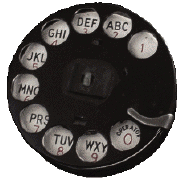#089 - Rotary to Keypads

References:
Lutz, M. C., & Chapanis, A. (1955). Expected locations of digits and letters on ten-button keysets. Journal of Applied Psychology, 39, 314-317.
Deininger, R.L. (1960). Human factors engineering studies of the design and use of pushbutton telephone sets. Bell System Technical Journal, 39. 995–1012.
Written by Juanita N. Baker, Ph.D.


 Give to Florida Tech
Give to Florida Tech 